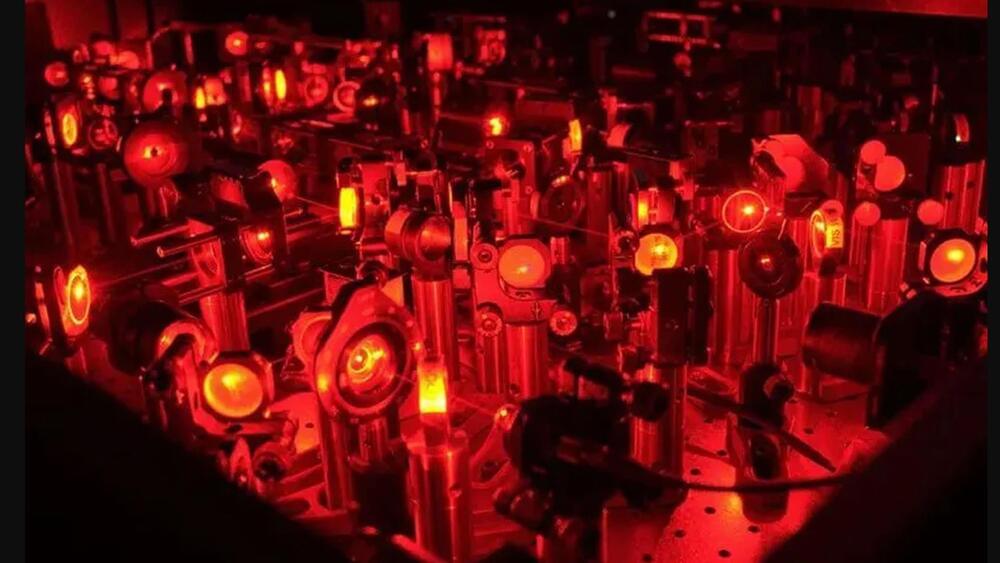Allergists can help treat and prevent allergy symptoms that effect day-to-day activities or decrease your quality of life.
Page 2961
Jul 18, 2023
Q-CTRL’s quantum navigation uses atom vibration for dead reckoning
Posted by Gemechu Taye in categories: military, particle physics, quantum physics

Australia-based Q-CTRL has officially announced that it will partner with the Australian military and AUKUS to develop GPS-free navigation using quantum sensors.
Australian quantum technology developer Q-CTRL has now officially partnered with Australia’s Department of Defence (DoD) and, by proxy, AUKUS partners to develop quantum sensors that will deliver quantum-assured navigation capability for military platforms. The program will use Q-CTRL’s “software-ruggedized” quantum sensing technology to enhance positioning and navigation.
Continue reading “Q-CTRL’s quantum navigation uses atom vibration for dead reckoning” »
Jul 18, 2023
Researchers use AI to help simulate and predict solar events
Posted by Gemechu Taye in categories: robotics/AI, space
This could help us improve our understanding of the Sun and its impact on space weather.
A collaborative effort between researchers at the University of Graz in Austria and the Skolkovo Institute of Science and Technology (Skoltech) in Russia used artificial intelligence (AI) to study the magnetic field in the upper atmosphere of the Sun, a press release said.
The solar magnetic field is a poorly understood area of research among astronomers. Even after centuries of watching the Sun, we only have limited information about how sunspots are formed or whether they will lead to events like a flare or a coronal mass ejection (CME).
Jul 18, 2023
AI Needs Its Own Day — But Should You Celebrate It On July 16th?
Posted by Gemechu Taye in category: robotics/AI

Artificial intelligence is rapidly changing our lives for the better making it easier, better, more entertaining, and, hopefully, longer and healthier. Between 2013 and 2014, advances in deep learning led to machines outperforming humans in image recognition, text recognition, voice recognition and many other tasks. The generative AI revolution, which, despite the many early proof-of-concept papers, went mainstream after the publication of the Generative Adversarial Networks (GANs) in 2014 and Transformers in 2017, has led to the creation of many advanced generative tools and apps that are transforming our lives in the most profound way possible. Many predictions made by Jensen Huang, the prolific CEO of NVIDIA — a company that has enabled and powered the AI revolution, have come true and even exceeded expectations. Instructional Transformer-based Large Language Models (LLMs) like ChatGPT are already in mainstream use. ChatGPT can already outperform me in the many writing tasks, and we even co-authored an academic paper. Today, there are millions of professionals working on the development of AI systems and applications. Many of these professionals, including the author of this article, would very likely celebrate ‘International AI Day’ if there were one.
On July 16th, social media lit up with the celebratory posts for the “AI Appreciation Day” often using the #AIAppreciationDay hashtag. Several large brands and academic institutions, including Zeiss, Wistar Institute, and MBZUAI followed.
Jul 18, 2023
China’s AI-powered robot promises minimally invasive brain surgeries
Posted by Gemechu Taye in categories: biotech/medical, robotics/AI
MicroNeuro ensures surgical safety and frees surgeons from labor-intensive tasks.
Today, less than 3 surgeries in the world are robot-assisted. The most common type of clinical robotic surgical system surgeons use includes a camera and mechanical arms with surgical instruments attached to them.
Robot assistance is known to provide more precision in brain surgeries than humans performing surgery, which may lead to damage to healthy tissues.
Jul 18, 2023
It’s Time to Consider the Federal Land Dividend
Posted by Zoltan Istvan in categories: biotech/medical, business, economics, government
Here’s my new Opinion essay at Newsweek. It’s about the need to use our nation’s massive natural resources to pay for a bipartisan tax free universal basic income, called the Federal Land Dividend. I hope you will read and share it!
In 2018, I began lecturing about the Federal Land Dividend, a bipartisan tax-free Universal Basic Income (UBI) based on monetizing the 640 million acres of mostly unused federally owned land. Due to the lasting effects of the coronavirus pandemic, which include a struggling U.S. economy, there is increasing interest in implementing basic income plans. The Federal Land Dividend is the only method that is both bipartisan and tax free.
An estimated 50 percent of the 11 most western states are mostly empty land that belong to the government. Estimates say this land and its resources are worth approximately $100 to $200 trillion. If we divide the middle— $150 trillion —by America’s population of 333 million, every person would have approximately $450,000 in equity. That’s much higher than the median net worth in America of $122,000.
Continue reading “It’s Time to Consider the Federal Land Dividend” »
Jul 18, 2023
Harvard scientists claim to have discovered the “Fountain of Youth” that can be put into a pill
Posted by Genevieve Klien in categories: biotech/medical, chemistry, Elon Musk, life extension
Scientists at Harvard University claim to have come excitingly close to finding the proverbial Fountain of Youth. According to a recent publication in the scientific journal Aging, the team has identified six chemical concoctions that have the ability to reverse the aging process in both human and mice skin cells.
Dr. David Sinclair, a molecular biologist at Harvard Medical School and co-author of the study, has hailed this as a “breakthrough” and sees it as a step towards “affordable whole-body rejuvenation.”
Dr. Sinclair has even suggested that human trials could commence within the next year. This prediction has caught the attention of prominent figures, such as tech mogul Elon Musk. He responded to the news with curiosity asking, “Ok, so what exactly is it?”
Jul 18, 2023
Medicine is plagued by untrustworthy clinical trials. How many studies are faked or flawed?
Posted by Paul Battista in category: biotech/medical
Investigations suggest that, in some fields, at least one-quarter of clinical trials might be problematic or even entirely made up, warn some researchers. They urge stronger scrutiny.
Jul 18, 2023
3 Advances in Philosophy That Made Science Better
Posted by Paul Battista in category: science
Philosophy is often ridiculed by scientists as being little more than armchair speculation. Stephen Hawking famously declared it “dead.” This is unfortunate because the scientific method itself is a manifestation of philosophical thought arising from the subdiscipline known as epistemology. Historically, science and philosophy have worked hand-in-glove to advance our understanding of the world. In fact, “science” went by the moniker “natural philosophy” for much of history.
Scientists perhaps should be a bit more grateful. Advances in social and political philosophy helped prevent some scientists who upset the established order from being executed — but that’s a discussion for another day. Here, we will examine three philosophical insights that directly led to advances in how science is performed.
“What makes science different from everything else?” is inherently a philosophical question. That means that philosophy helps define what science is. This is important because, to learn about the world, we need to be sure of the validity of our methods. For most of the history of Western philosophy, Aristotle’s ideas reigned supreme. While Aristotle’s idea of finding causes through science was largely based on deductive reasoning, experimentation was not seen as a vital part of science.
Jul 18, 2023
The Future Of Personally Identifiable Information And Health Data
Posted by Shubham Ghosh Roy in categories: blockchains, health
4. Embrace Decentralized Solutions: Start exploring decentralized technologies like blockchain and decentralized storage solutions. Understand how they can empower you as the custodian of your data by reducing reliance on third-party intermediaries. Research and adopt decentralized platforms that align with your data ownership goals.
5. Stay Informed About Tokenization: Familiarize yourself with the concept of tokenization and how it can impact data ownership. Learn about the potential benefits and risks of tokenizing your data, and evaluate whether it aligns with your objectives. Stay updated on emerging tokenization platforms or data marketplaces that offer opportunities to securely monetize or share your data.
The road to personal data ownership is a bold, significant step forward, but it represents a necessary departure from the status quo. As we move toward a future powered by data-driven insights, the empowerment of individuals as the gatekeepers of their digital selves will become increasingly important to balance the scales between privacy and progress.















